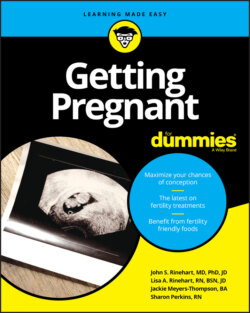Читать книгу Getting Pregnant For Dummies - Sharon Perkins - Страница 56
Sperm — 200 million of them!
ОглавлениеNature designed women to have one child at a time — which is why most women will release a single egg every month. The eggs enter the fallopian tube. The tube has a very special environment designed to meet the metabolic needs of the egg and the early developing embryo. The tube also has cells with hair-like projections so that the egg and then the embryo can be transported to the uterus. Sperm fertilize the egg in the fallopian tube. A normal ejaculate may contain over 100 million sperm, but only about 100–1,000 actually make it to the egg. The sperm have proteins on their surface that match proteins on the shell of the egg and allow the sperm to bind to the shell of the egg. The sperm do not mechanically pierce the egg; they release proteins that biochemically digest a pathway through the shell, and once near the egg, bind to the egg. The egg then brings the sperm inside. There are packages of proteins just inside the wall of the egg that are released once a sperm enters. They harden the shell and prevent fertilization by more than one sperm. The fertilized egg is now called an embryo and will grow to an 8-32 cell embryo in the fallopian tube before being transported to the uterus.
Why are there so many more sperm than eggs? Because it’s a long way through the uterus and up the tubes, and because only 50 percent (of a good sperm sample) of the sperm know how to swim forward, and because some of them are barely moving, a tremendous number of sperm are needed to ensure that a few hundred will get through to the egg. Their journey is like one of you trying to swim across the Pacific Ocean. If there were 200 million of you, maybe a few hundred would make it. Imagine if you had to fertilize an egg when you finally got there! (We talk about sperm and male factor issues much more in Chapter 12.)
